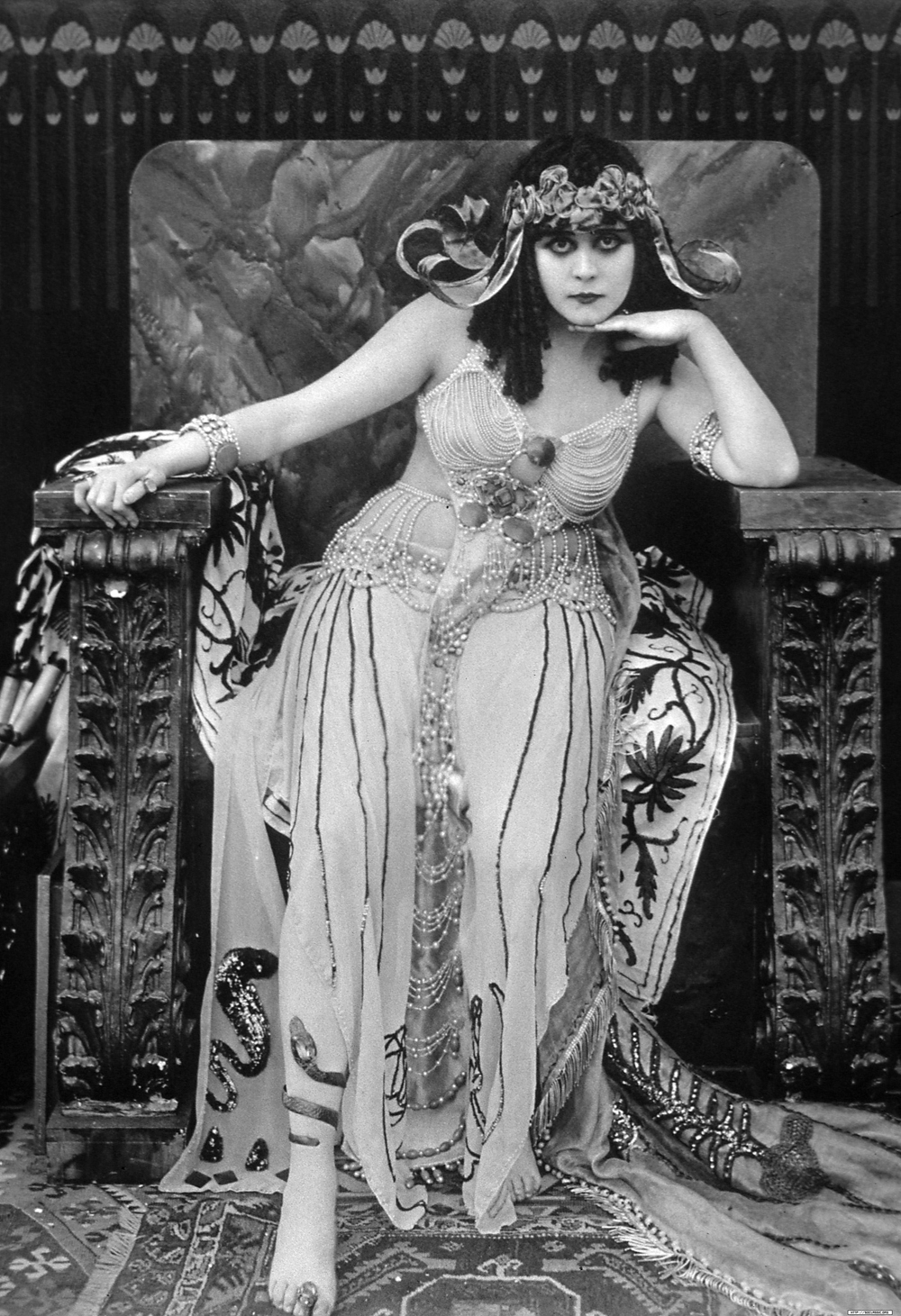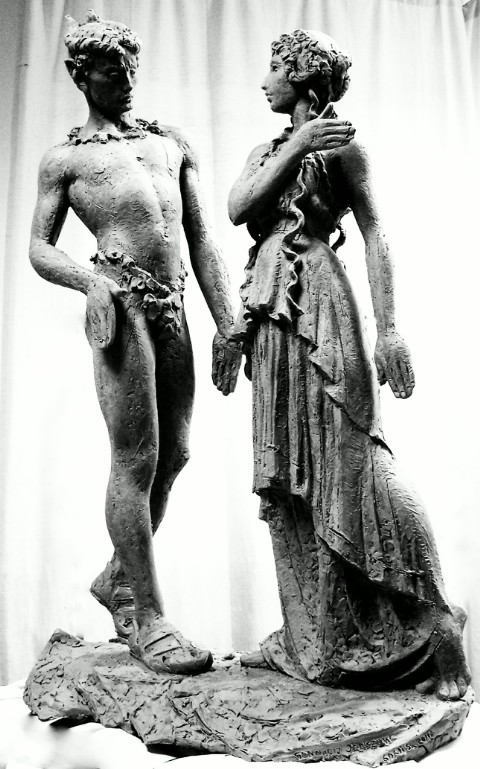|
Le Dieu Bleu
''Le Dieu bleu'' is a ballet in one act choreographed by Michel Fokine to music by Reynaldo Hahn, set to a libretto by Jean Cocteau and Federico de Madrazo y Ochoa. Léon Bakst designed the sets and costumes. The ballet was a failure at the premiere in Paris, on 13 May 1912 at the Théâtre du Châtelet. ''Le Dieu bleu'' was staged three times in Paris in 1912, three times in London in 1913, and revived in London in April 2011 with music cobbled together from the works of Scriabin and with choreography by Wayne Eagling. The revival was not a success. Background Ballet impresario and producer Sergei Diaghilev staged two exotic ballets for the Ballets Russes: ''Cléopâtre'' in 1909 and ''Scheherazade'' in 1910, both great successes with the Parisian public. He hoped that ''Le Dieu bleu'' (another exotic ballet) would be equally successful. It was one of six new ballets for the 1911 Ballets Russes season. The others were ''Narcisse'', '' La Peri'', '' Le Spectre de la rose'', ''S ... [...More Info...] [...Related Items...] OR: [Wikipedia] [Google] [Baidu] |
Michel Fokine
Michael Fokine, ''Mikhail Mikhaylovich Fokin'', group=lower-alpha ( – 22 August 1942) was a groundbreaking Imperial Russian choreographer and dancer. Career Early years Fokine was born in Saint Petersburg to a prosperous merchant and at the age of 9 was accepted into the Saint Petersburg Imperial Ballet School. That same year, he made his performing debut in '' The Talisman'' under the direction of Marius Petipa. In 1898, on his 18th birthday, he debuted on the stage of the Imperial Mariinsky Theatre in ''Paquita'', with the Imperial Russian Ballet. In addition to being a talented dancer, Fokine was also passionate about painting and displayed talent in this area as well. He also played musical instruments, including mandolin (played on stage in ensemble led by Ginislao Paris), domra, and balalaika (played in Vasily Andreyev's Great Russian Orchestra). Transition to choreographer He became frustrated with the life of a dancer and began considering other paths, includin ... [...More Info...] [...Related Items...] OR: [Wikipedia] [Google] [Baidu] |
Cléopâtre (ballet)
''Cléopâtre'' is a ballet in one act with choreography by Mikhail Fokine and music by Anton Arensky, Alexander Taneyev, Nikolai Rimsky-Korsakov, Mikhail Glinka, Alexander Glazunov, Modeste Mussorgsky, and Nikolai Tcherepnin. The scenery and costumes were created by Léon Baskt. The first production opened at Théâtre du Châtelet in Paris on June 2, 1909. The ballet starred Anna Pavlova as Ta-hor and Ida Rubinstein as Cleopatra. Mikhail Fokine himself danced Amoun. The favourite slaves of Cleopatra were danced by Tamara Karsavina and Vaslav Nijinsky. Other characters included Servants of the Temple, Egyptian Dancers, Greeks, Satyrs, Jewish Dancers, Syrian Musicians and Slaves. Cyril W. Beaumont writes that ''Cléopâtre'' is a largely based on a ballet called ''Une Nuit d'Égypte'' that was first produced by Fokine at the Mariinsky Theatre in St. Petersburg, Russia in 1908. The veil dance features Glinka's "Danse Orientale" from his opera '' Russlan and Ludmilla''. "Danse Per ... [...More Info...] [...Related Items...] OR: [Wikipedia] [Google] [Baidu] |
Nelumbo Nucifera
''Nelumbo nucifera'', also known as sacred lotus, Laxmi lotus, Indian lotus, or simply lotus, is one of two extant species of aquatic plant in the family Nelumbonaceae. It is sometimes colloquially called a water lily, though this more often refers to members of the family Nymphaeaceae. Lotus plants are adapted to grow in the flood plains of slow-moving rivers and delta areas. Stands of lotus drop hundreds of thousands of seeds every year to the bottom of the pond. While some sprout immediately, and most are eaten by wildlife, the remaining seeds can remain dormant for an extensive period of time as the pond silts in and dries out. During flood conditions, sediments containing these seeds are broken open, and the dormant seeds rehydrate and begin a new lotus colony. Under favorable circumstances, the seeds of this aquatic perennial may remain viable for many years, with the oldest recorded lotus germination being from seeds 1,300 years old recovered from a dry lakebed in n ... [...More Info...] [...Related Items...] OR: [Wikipedia] [Google] [Baidu] |
Rock Temple
Rock-cut architecture is the creation of structures, buildings, and sculptures by excavating solid rock where it naturally occurs. Intensely laborious when using ancient tools and methods, rock-cut architecture was presumably combined with quarrying the rock for use elsewhere. Though, in India and China, the terms ''cave'' and ''cavern'' are often applied to this form of man-made architecture, caves and caverns that began in natural form are not considered to be rock-cut architecture even if extensively modified. Although rock-cut structures differ from traditionally built structures in many ways, many rock-cut structures are made to replicate the facade or interior of traditional architectural forms. Interiors were usually carved out by starting at the roof of the planned space and then working downward. This technique prevents stones falling on workers below. The three main uses of rock-cut architecture were temples (like those in India), tombs, and cave dwellings (like those in C ... [...More Info...] [...Related Items...] OR: [Wikipedia] [Google] [Baidu] |
Bronislava Nijinska
Bronislava Nijinska (; pl, Bronisława Niżyńska ; russian: Бронисла́ва Фоми́нична Нижи́нская, Bronisláva Fomínična Nižínskaja; be, Браніслава Ніжынская, Branislava Nižynskaja; – February 21, 1972) was a Polish ballet dancer, and an innovative choreographer. She came of age in a family of traveling, professional dancers. Her own career began in Saint Petersburg. Soon she joined Ballets Russes which ventured to success in Paris. She met war-time difficulties in Petrograd and revolutionary turbulence in Kiev. In France again, public acclaim for her works came quickly, cresting in the 1920s. She then enjoyed continuing successes in Europe and the Americas. Nijinska played a pioneering role in the broad movement that diverged from 19th-century classical ballet. Her introduction of modern forms, steps, and motion, and a minimalist narrative, prepared the way of future works. Following serious home training, she entered t ... [...More Info...] [...Related Items...] OR: [Wikipedia] [Google] [Baidu] |
Tamara Karsavina
Tamara Platonovna Karsavina (russian: Тамара Платоновна Карсавина; 10 March 1885 – 26 May 1978) was a Russian prima ballerina, renowned for her beauty, who was a principal artist of the Imperial Russian Ballet and later of the Ballets Russes of Sergei Diaghilev. After settling in Britain at Hampstead in London, she began teaching ballet professionally and became recognised as one of the founders of modern British ballet. She assisted in the establishment of The Royal Ballet and was a founder member of the Royal Academy of Dance, which is now the world's largest dance-teaching organisation. Family and early life Tamara Karsavina was born in Saint Petersburg, the daughter of Platon Karsavin, Platon Konstantinovich Karsavin and his wife, Anna Iosifovna (née Khomyakova). A principal dancer and mime with the Mariinsky Ballet, Imperial Ballet, Platon also taught as an instructor at the Vaganova Ballet Academy, Imperial Ballet School (Vaganova Ballet Academ ... [...More Info...] [...Related Items...] OR: [Wikipedia] [Google] [Baidu] |
Indian Art
Indian art consists of a variety of art forms, including painting, sculpture, pottery, and textile arts such as woven silk. Geographically, it spans the entire Indian subcontinent, including what is now India, Pakistan, Bangladesh, Sri Lanka, Nepal, and at times eastern Afghanistan. A strong sense of design is characteristic of Indian art and can be observed in its modern and traditional forms. The origin of Indian art can be traced to prehistoric settlements in the 3rd millennium BCE. On its way to modern times, Indian art has had cultural influences, as well as religious influences such as Hinduism, Buddhism, Jainism, Sikhism and Islam. In spite of this complex mixture of religious traditions, generally, the prevailing artistic style at any time and place has been shared by the major religious groups. In historic art, sculpture in stone and metal, mainly religious, has survived the Indian climate better than other media and provides most of the best remains. Many of the mos ... [...More Info...] [...Related Items...] OR: [Wikipedia] [Google] [Baidu] |
Vaslav Nijinsky
Vaslav (or Vatslav) Nijinsky (; rus, Вацлав Фомич Нижинский, Vatslav Fomich Nizhinsky, p=ˈvatsləf fɐˈmʲitɕ nʲɪˈʐɨnskʲɪj; pl, Wacław Niżyński, ; 12 March 1889/18908 April 1950) was a ballet dancer and choreographer cited as the greatest male dancer of the early 20th century. Born in Kiev to Polish parents, Nijinsky grew up in Imperial Russia but considered himself to be Polish. He was celebrated for his virtuosity and for the depth and intensity of his characterizations. He could dance ''en pointe'', a rare skill among male dancers at the time, and was admired for his seemingly gravity-defying leaps. Nijinsky was introduced to dance by his parents, who were senior dancers with the travelling Setov opera company, and his early childhood was spent touring with the company. His elder brother Stanislav and younger sister Bronislava "Bronia" Nijinska also became dancers; Bronia also became a choreographer, working closely with him for much of his ... [...More Info...] [...Related Items...] OR: [Wikipedia] [Google] [Baidu] |
Le Martyre De Saint Sébastien
''Le Martyre de saint Sébastien'' is a five-act musical mystery play on the subject of Saint Sebastian, with a text written in 1911 by the Italian author Gabriele D'Annunzio and incidental music by the French composer Claude Debussy (L.124). Background The work was produced in collaboration between Gabriele D'Annunzio (at that time living in France to escape his creditors) and Claude Debussy, and designed as a vehicle for Ida Rubinstein. Debussy's contribution was a large-scale score of incidental music for orchestra and chorus, with solo vocal parts (for a soprano and two altos). Debussy accepted the commission in February 1911. Some of the material was orchestrated by André Caplet. During auditions for the female semi-chorus, the chorus director Désiré-Émile Inghelbrecht suggested, on hearing Ninon Vallin, that she take over the role of the celestial voice. As Rose Féart (who had been engaged) was absent from the general rehearsal, Vallin sang the role and Debussy insiste ... [...More Info...] [...Related Items...] OR: [Wikipedia] [Google] [Baidu] |
Ida Rubinstein
Ida Lvovna Rubinstein (russian: И́да Льво́вна Рубинште́йн; – 20 September 1960) was a Russian dancer, actress, art patron and Belle Époque figure. She performed with Diaghilev's Ballets Russes from 1909 to 1911 and later formed her own company. ''Boléro'' by Ravel (1928) was among her commissions. Biography Early life and family Rubinstein was born into one of Russia's richest families, to Jewish parents in Kharkov, Russian Empire, and grew up in Saint Petersburg. For many years, it was a mystery whether she was born in Kharkov or Saint Petersburg, complicated by the rumour that "Ida" was short for "Adelaida". Rubinstein herself would not confirm where she was born, nor if Ida was a nickname, preferring the aura of mystery. Years after her death, the record was discovered in the archives of the Kharkov Choral Synagogue, where her father had been a board member: the birth of a daughter, Ida Lvovna, on 21 September (Adoption of the Gregorian cale ... [...More Info...] [...Related Items...] OR: [Wikipedia] [Google] [Baidu] |
Petrushka
Petrushka ( rus, Петру́шка, p=pʲɪtˈruʂkə, a=Ru-петрушка.ogg) is a stock character of Russian folk puppetry. Italian puppeteers introduced it in the first third of the 19th century. While most core characters came from Italy, they were soon transformed by the addition of material from the Russian 'lubki' and 'intermedii.' Petrushkas are traditionally marionettes, as well as hand puppets. The character is a kind of a jester distinguished by his red dress, a red '' kolpak'', and often a long nose. Word origin Although the Russian word "petrushka" has a homonym meaning "parsley", in this context the word is actually a hypocoristic (diminutive) for "Pyotr" (Пётр), which is Peter in Russian. Despite this, the character has little or nothing in common with the ''commedia dell'arte'' stock characters of Petruccio or Pierrot, but is instead a Russian version of Punch or Pulcinella. History Pietro-Mira Pedrillo of Italy, the court jester of the Empress Anna Io ... [...More Info...] [...Related Items...] OR: [Wikipedia] [Google] [Baidu] |







_photographed_at_Krasnoe_Selo%2C_summer_1907.jpg)

